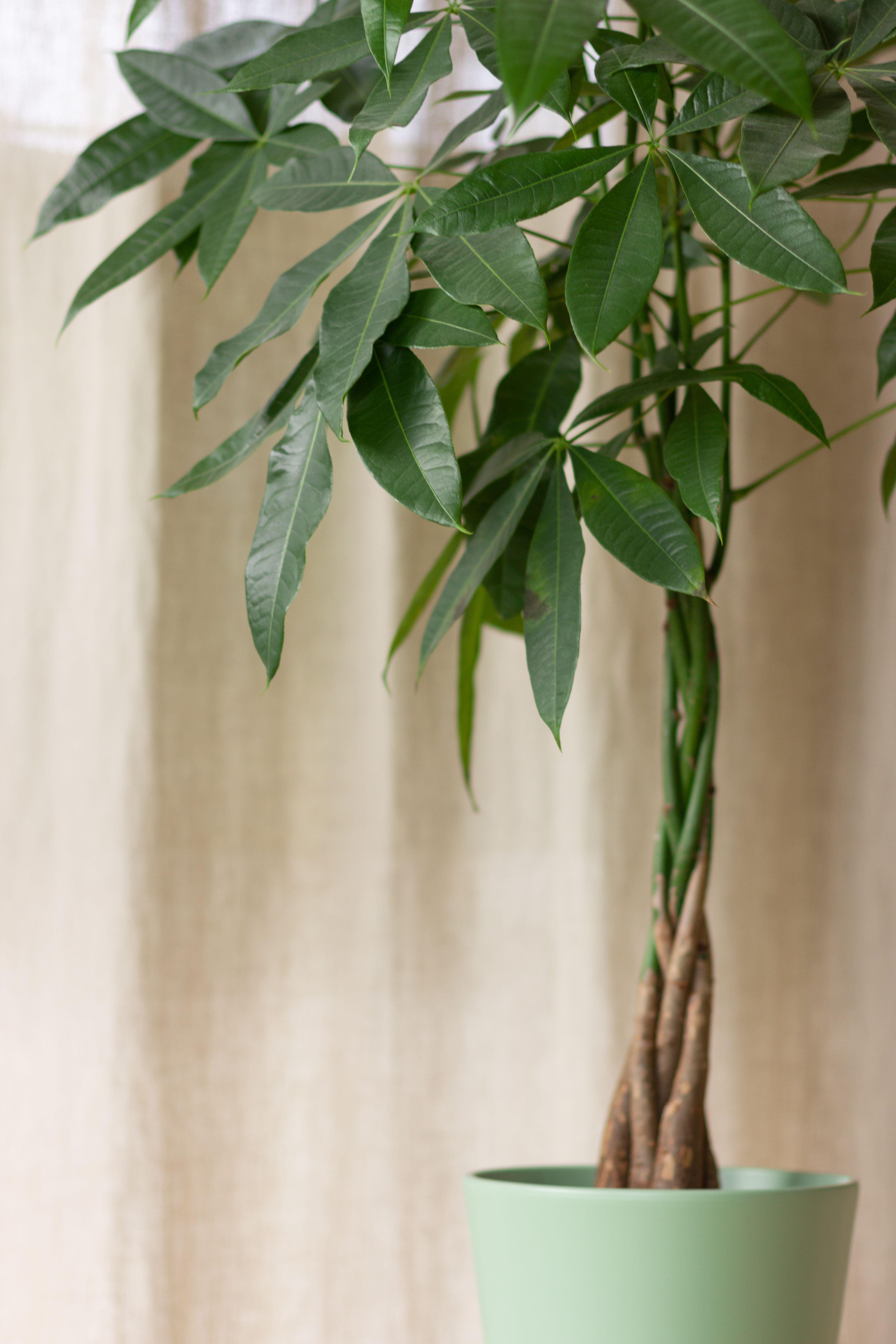Money tree care – get the best out of this exotic houseplant
Discover the essential steps of money tree care, to keep these tropical beauties thriving


Good money tree care is vital to ensure these exotic houseplants will flourish in your home.
One of the best indoor trees, the money tree – also known as Pachira aquatica – particularly thrives in a humid environment, making it ideal for adding greenery to the bathroom.
‘The money tree is a low-maintenance indoor foliage plant, popular due to its braided trunks, glossy green leaves, and ability to give your home a tropical feel,’ says Bloomscape's gardening expert, Lindsay Pangborn.
‘It can also adapt and thrive in a variety of light environments, ranging from low to bright, indirect light to fluorescent lights.’
In addition to its attractive appearance, the money tree is also reputed to bring good luck and fortune to its owner, so makes a thoughtful housewarming gift.
Money tree care guide
‘Money trees are relatively easy to take care of, and so are considered to be a beginner's houseplant,’ says Jason White, founder of All About Gardening. ‘With proper care, indoor money trees can grow as tall as 3-6 feet.’
The most important aspect of money tree care is to position it in the best spot in your home to provide adequate light and moisture levels. Then, you will find it requires very little effort to look after.
Design expertise in your inbox – from inspiring decorating ideas and beautiful celebrity homes to practical gardening advice and shopping round-ups.

How much light does a money tree need?
Money trees should be positioned in medium to bright indirect light – so choose a nice, light spot in your home where the tree won’t be exposed to too much glare from the sun. Ideally this will be a few feet away from a window.
‘To help the plant grow in a balanced way, I recommend turning your plant regularly so that each side receives equal amounts of light,’ says Pangborn.
However, she warns that moving the tree around your home is a bad idea: ‘Money trees do not do well with frequent relocation since they prefer to stay in the same spot within the home. In instances where you do need to relocate, several leaves might drop off as it adjusts.’
If you aren’t able to provide enough natural light, the tree can adapt to low and fluorescent lights. However, a grow light can also be used – you can buy these from Amazon.
Be careful when placing your money tree in direct sunlight for too long, as it can result in its foliage burning.
‘While the plant needs constant light to generate the energy for growth, direct sunlight is too harsh,’ adds White. ‘It is best positioned in a partially shaded location where sunlight is not too intense.
Money tree watering
Watering is a crucial aspect of money tree care – and it's important to get the levels just right.
‘Money trees are very forgiving when it comes to water – they like a good soaking but you must let the soil run dry between waterings, and don’t let it sit in standing water, says Shane Pliska from interior landscaping firm Planterra.
You will find that money trees don’t require much watering in the winter, but in the spring and summer you may need to water weekly.
With houseplants, it’s always best to water as and when needed, rather than relying on a watering schedule. Push your finger into the soil down to the knuckle, and feel how dry it is.
‘Money trees prefer deep, but infrequent waterings,’ adds Pangborn. ‘Wait until at least 50 per cent of the soil volume has dried out, and add water slowly until it flows freely through the drainage hole.’
Once the water reaches the pot’s bottom, remove excess water from its saucer to prevent root rot.
You should also fertilize your money tree during the spring and summer months. ‘Money trees appreciate a water-soluble, well-balanced plant food at half the recommended strength once a month, says Pangborn.
‘Since its growth will naturally slow in the winter time, there is no need for fertilizer then.’
How much humidity does a money tree need?
Money trees do prefer to have some humidity, which is why positioning them in the bathroom is a popular option. However, there are other ways to boost moisture levels.
‘Try using a pebble tray or placing a humidifier nearby,’ says Pangborn. ‘This can be especially important during the drier winter months.’
Pebble trays can be bought inexpensively from Amazon, and help to increase humidity in the area surrounding the plant.
In terms of the recommended room temperature, she suggests that money trees will thrive between 65-80°F (18-27°C).
Pruning money trees
Money trees may require pruning if the stems or trunks begin to decline.
‘If this happens, cut out any dead stems or trunks, since allowing them to remain can cause disease issues,’ says Pangborn.
‘On a braided trunk tree, a dead trunk can be carefully cut into short lengths with pruners and removed from the living trunks.’
Make sure the pruners are sterilized between each cut to avoid spreading disease.
How to repot money trees
To get the best out of your money tree, you should repot it once it outgrows its current container. You will likely need to do this every 2-3 years.
If your tree seems to have stunted growth, then repotting it is a good way to reinvigorate it with fresh nutrients.
Make sure your new pot has good drainage holes and is deep enough to accommodate the plant’s roots. It should be 1-2 inches in diameter bigger than the existing pot.
If you would prefer your money tree not to grow too tall, you can trim the roots lightly, by no more than a quarter. You should also remove any roots that have rotted.
It’s important that the potting soil you use is free draining, so customize your houseplant mix by adding perlite, sand or pumice.
Problems and pests
The most common issue money tree care issue is too little or too much moisture. The telltale signs of this happening are yellow or drooping leaves.
‘If you overwater and don’t allow excess water to drain, the money tree can experience “wet feet”, causing the roots to rot and lead to the eventual death of the plant. Leaves beginning to yellow or brown are the initial sign of root rot occurring,' says Pangborn.
‘Having low humidity levels and dry soil can also cause the money tree’s leaves to yellow. Later on, its entire leaves can turn yellow, brown, or fall off completely. To fix this, add a boost of humidity through a mister or pebble tray.’
Yellow leaves can also be an indicator of low light levels, which can be fixed through the use of a grow light.
Improper watering can also cause a money tree’s trunk to die. ‘If the stem is too dry, it can begin to shrivel. If the plant is being overwatered, this can lead to root or crown rot,’ adds Pangborn.
‘However, if a stem is dead, it can be removed before the other stems begin to decline.’
Insect infestations are not common, but are more likely to happen when the tree is weak. Look out for mealybugs, scale insects and spider mites.
‘To combat this issue, neem oil can treat active pests and prevent future outbreaks,’ adds Pangborn.

Melanie has worked in homes and gardens media for two decades. Having previously served as Editor on Period Living magazine, and worked on Homes & Gardens, Gardening Etc, Real Homes, and Homebuilding & Renovating, she is now focusing on her passion for gardening as a Senior Editor at Gardening Know How. As a keen home grower, Melanie has experimented with pretty much every type of vegetable at some point – with mixed results. Often it is the simplest things that elude you, which may explain why she just can't seem to master zucchinis.